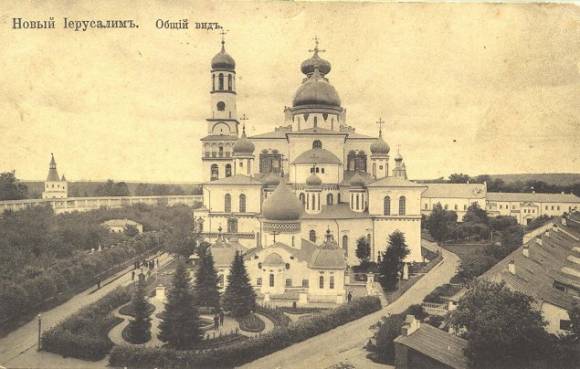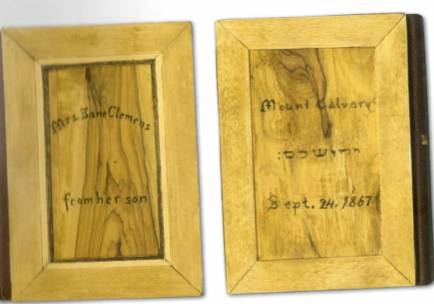Issue ID: 06
December 2013
ABSTRACT
Evliya’s description of his journey in 17th century Ottoman Palestine is a good example of the importance of travelogue, especially as it gives another viewpoint, that of a Muslim scholar. Through his eyes, it is possible to see the country, hear local traditions and get a better understanding of realities in that time and place. This article should be considered as an attempt to initiate either a greater research project on Evliya’s Seyahatname concerning Palestine or a collection and publication of other Muslim travelers’ narratives from the Ottoman period, which are scarce and not always accessible.
ABSTRACT
Rich in historical details and artistic illustrations of the Near East and the Holy Land, the selected accounts of journeys and pilgrimages written by European and American Christians (Catholic and Protestant) provide numerous and broad sets of views, landscapes, sketches and scenarios. This article analyses them in order to define and point out the structure and the ratio of organizing and cataloguing these “epic” stories, and their relationship and connection with the socio-political dimension of the time. In particular, this article analyses the concept and the image produced by Christian missionaries and travelers of various affiliations, thus identifying similarities and differences between their visions of the Holy Land and pointing out to what extent they contributed to the creation of an univocal “Christian” image of the Holy Land during the 19th century and/or there were perceptible and significant divergences.
ABSTRACT
This article focuses on three main aspects: the presence of the Holy Land in the Russian literature of pilgrimage, the creation in Palestine of Russian institutions, and the representations of the Holy Land in Russian architecture. By doing that, this article aims at analyzing how personalities of the Russian cultural, literary and religious world spoke about the Holy Land in the 19th century (the so-called ‘Russian Palestine’), while pointing out the value of pilgrimage to the Holy Land for the Russian Orthodox tradition and also recalling the important element of the representation of ‘Jerusalem outside Jerusalem’.
ABSTRACT
In 1842 the middle-aged Austrian Ida Pfeiffer (1797-1858) set out for the Holy Land. To counter protests from her family, horrified by her plan to travel alone, Pfeiffer, who became a well-respected travel writer, disguised this journey as a pilgrimage. Her travel diary, which appeared as Reise einer Wienerin in das Heilige Land (1844; A Visit to the Holy Land, 1852), gives immediacy to her perceptions and conveys the excitement she felt despite the many hardships of the journey. In it she presented herself as a religious woman eager to visit sacred sites, but she also relished the freedom of traveling and she commented on life in the Holy Land at that time, views that were widely disseminated because of the book’s popularity in Europe. Her diary vividly depicts her own perceptions of being a “pilgrim,” presents a picture of life in the Holy Land, as she experienced it, and reveals the difficulties she encountered as a woman traveler.
ABSTRACT
This paper aims at offering valuable insights into the complex encounter between 19th-century Western travelers and the urban landscape of Palestine. The first part shows that, despite their efforts to distance themselves from the religious overtones of their predecessors, visitors tended to shove aside what they considered as ‘inauthentic’ or the product of acculturation in favor of a more conventional portrayal drawing on biblical imagery. This idealized vision was bound to struggle with disappointment, and the second part of this paper looks at how the representations of the city moved in the course of the 19th century from a purely pictorial transposition to a more practical and informed understanding of otherness. Travel writers began to devote considerable portions of their narratives to various aspects of life in the oriental town, while still predominately focusing on what they viewed as exotic and remote in comparison to European, and to a larger extent, Western culture.
ABSTRACT
William C. Prime’s Tent Life in the Holy Land (1857) is mostly remembered now as the target of parody in The Innocents Abroad (1869), where, eager to promote his own “honest” and “impartial” account of Palestine, Mark Twain mocked the maudlin style of his old-fashioned predecessor. Readers since took their cue from Twain and tagged American Holy-Land narratives as “secular” or “religious,” “realist” or “sentimental,” “factual” or “fictitious.” But an intertextual consideration of Tent Life and The Innocents shows the limits of such taxonomies. This essay traces the various thematic and stylistic strands shared by Twain and Prime in order to reveal the intricate texture of the 19th-century Protestant Holy Land archive, its resistance to linear narratives of secularization. This methodology also addresses some lingering tensions between poststructuralist and humanistic positions in the study of Orientalism.
ABSTRACT
This article analyses perceptions of the Holy Land through the pictorial representations of Jewish holy places in the Romanian Moldavia synagogues from the mid-19th to the mid-20th century. These images implied the sanctity of the biblical land and the belief in its messianic revival by the Jewish people. Some synagogue artists ‘domesticated’ their paintings of a never-seen land by depicting those remote places according to features characteristic of familiar local landscapes.
ABSTRACT
At the beginning of the 20th century, Ottoman Palestine became a popular destination for tourists, and their number rose significantly during the British Mandate. In particular, Jewish tourists increasingly visited Palestine and among them a new typology of travelers developed, i.e. Zionist travelers. This article draws on travelogues published in the 1920s and 1930s and aims at demonstrating that these travelogues, while presenting personal and direct experiences of Eretz Israel, corresponded perfectly with – and bolstered – the narrative that Zionism was using to describe its enterprise.


